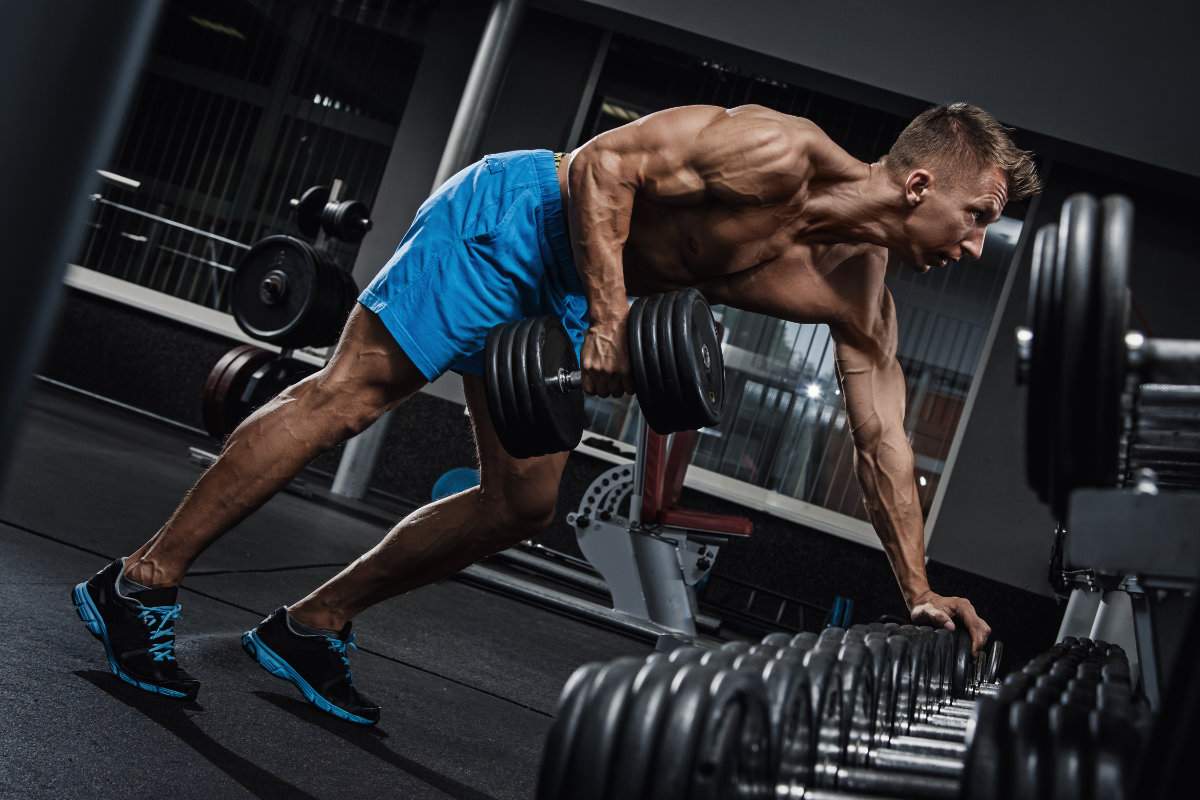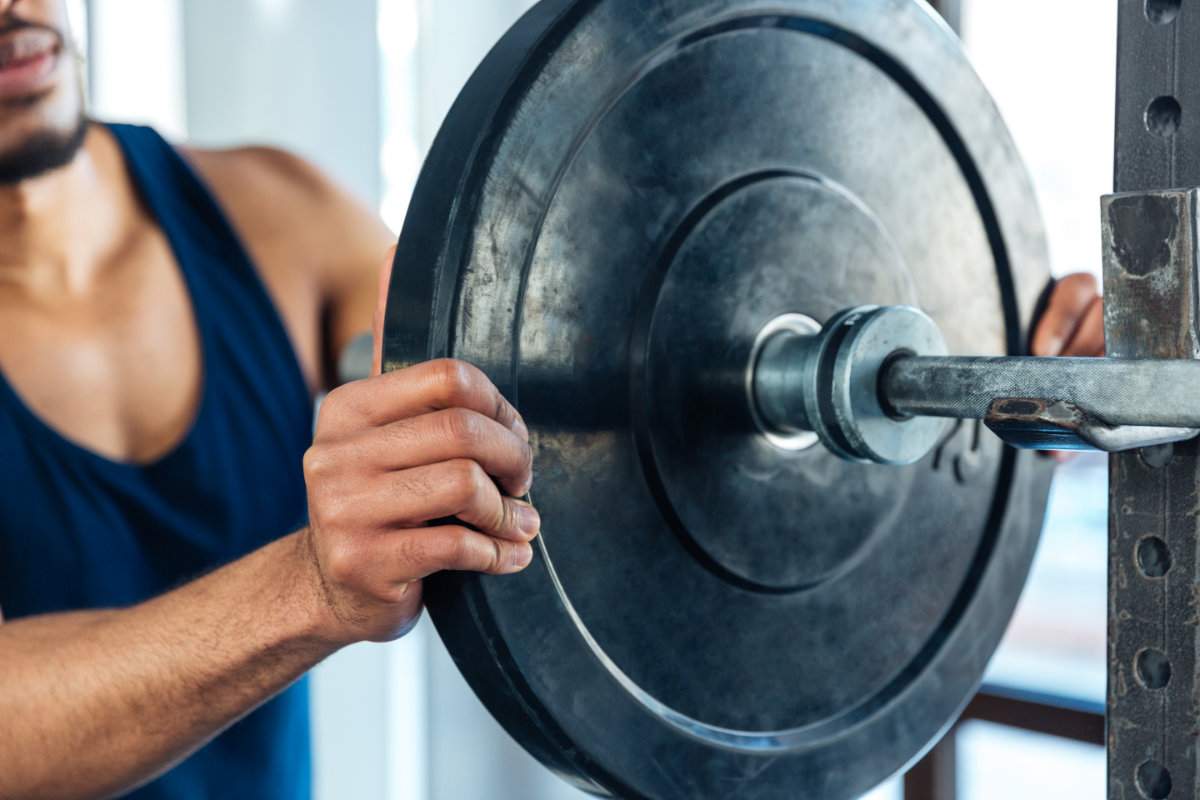Getting rid of upper body fat requires the right combination of exercises that build muscle and burn calories. The best upper body weight loss exercises target multiple muscle groups at once, increase your metabolic rate, and create the lean, toned look most people want.
What Are The Most Effective Upper Body Exercises For Fat Loss?
Push-ups, dips, and rows are the three most effective exercises for upper body fat loss. These compound movements engage your chest, shoulders, back, and arms simultaneously while burning significant calories during and after your workout.
Research shows that compound exercises burn up to 50% more calories than isolation movements. When you perform a push-up, you’re not just working your chest. You’re engaging your core, shoulders, triceps, and even your legs for stability. This full-body engagement creates a higher caloric burn and builds more functional strength.
Dips work your chest, triceps, and shoulders while forcing your core to stabilize your entire body weight. A 75kg person burns approximately 8-10 calories per minute performing dips at moderate intensity. The eccentric lowering phase is particularly important because it creates microscopic muscle damage that your body must repair, burning additional calories for up to 48 hours after your workout.
Rows target your back muscles, which are often undertrained compared to chest and arms. Building your back muscles improves posture, makes your waist appear smaller, and increases your overall metabolic rate. Muscle tissue burns approximately 6 calories per pound per day at rest, while fat tissue burns only 2 calories per pound.
How Often Should You Train Upper Body For Weight Loss?
Train your upper body 3-4 times per week with at least one rest day between sessions. This frequency allows enough stimulus for muscle growth and fat loss while providing adequate recovery time.
Your muscles don’t grow during workouts. They grow during recovery. When you strength train, you create small tears in muscle fibers. Your body repairs these tears during rest periods, making the muscle stronger and larger. This process requires energy, which means you’re burning calories even on rest days.
A study published in the Journal of Strength and Conditioning Research found that training each muscle group 2-3 times per week produced better results than training once per week. The participants who trained more frequently lost more body fat and gained more muscle mass over a 12-week period.
9 Steps To Shed 5-10kg In 6 Weeks
Includes an exercise plan, nutrition plan, and 20+ tips and tricks.
Download FreeWhat’s The Best Upper Body Workout Structure?
Start with compound movements when you’re fresh, then move to isolation exercises. Perform 3-4 sets of 8-15 repetitions for each exercise, resting 60-90 seconds between sets.
Here’s an effective upper body workout structure:
- Warm up for 5-10 minutes with arm circles, light cardio, and mobility work
- Perform 3-4 sets of push-ups (8-15 reps)
- Perform 3-4 sets of rows (8-15 reps)
- Perform 3-4 sets of dips (8-15 reps)
- Perform 3 sets of shoulder presses (10-12 reps)
- Finish with 2-3 sets of bicep and tricep exercises (12-15 reps)
The 8-15 rep range is ideal for building muscle while burning fat. Lower reps (1-5) focus primarily on strength. Higher reps (15+) focus on muscular endurance. The middle range provides the best combination for body composition changes.
Do You Need Equipment For Upper Body Fat Loss?
No, bodyweight exercises are highly effective for upper body fat loss. Push-ups, dips using a chair or bench, and inverted rows using a table provide excellent resistance without any equipment.
Bodyweight training offers several advantages. First, you can train anywhere without gym membership costs. Second, bodyweight exercises force you to control your entire body weight, which improves coordination and core strength. Third, you can easily modify difficulty by changing your body angle or tempo.
For push-ups, elevating your hands makes the exercise easier. Elevating your feet makes it harder. You can also slow down the lowering phase to 3-4 seconds, which dramatically increases difficulty without adding weight.
If you want to add equipment, resistance bands cost $20-50 AUD and provide variable resistance throughout the movement. Dumbbells ranging from 5-20kg cost $50-200 AUD and allow for progressive overload as you get stronger.
How Does Upper Body Training Burn Fat?
Upper body training burns fat through three mechanisms: immediate calorie burn during exercise, increased metabolic rate for 24-48 hours after training, and higher resting metabolism from increased muscle mass.
During a 30-minute upper body workout, a 75kg person burns approximately 180-250 calories depending on intensity. This immediate burn is just the beginning.
After intense strength training, your body enters a state called excess post-exercise oxygen consumption (EPOC). Your metabolism remains elevated as your body repairs muscle tissue, replenishes energy stores, and removes metabolic waste. This can increase your metabolic rate by 5-10% for up to 48 hours, burning an additional 100-200 calories per day.
The long-term benefit comes from increased muscle mass. Each pound of muscle burns approximately 6 calories per day at rest. If you gain 5 pounds of muscle through consistent training, you’ll burn an extra 30 calories per day without doing anything. Over a year, that’s 10,950 additional calories burned, equivalent to approximately 1.4kg of fat loss.
What’s The Role Of Tempo In Upper Body Exercises?
Tempo refers to the speed at which you perform each phase of an exercise. Slower tempos increase time under tension, which builds more muscle and burns more calories per repetition.
A standard tempo is 2 seconds up, 1 second pause, 3 seconds down. This creates 6 seconds of tension per repetition. If you perform 10 reps, that’s 60 seconds of continuous muscle tension, which is ideal for muscle growth and fat loss.
The eccentric (lowering) phase is particularly important. Research shows that eccentric training creates more muscle damage and requires more energy for recovery. When you lower yourself slowly during a push-up, you’re maximizing the muscle-building and calorie-burning effect of each repetition.
Should You Combine Cardio With Upper Body Training?
Yes, combining high-intensity intervals with upper body training maximizes fat loss. Perform 20-30 seconds of intense cardio between strength exercises to keep your heart rate elevated throughout the workout.
This approach, called metabolic resistance training, provides the muscle-building benefits of strength training with the cardiovascular benefits of cardio. You’re essentially getting two workouts in one session.
For example, perform a set of push-ups, then immediately do 20 seconds of high knees or jumping jacks, then move to your next exercise. This keeps your heart rate in the fat-burning zone (70-85% of maximum heart rate) throughout the entire workout.
A study comparing traditional strength training to metabolic resistance training found that participants doing metabolic training burned 30% more calories during the workout and maintained elevated metabolism for longer afterward.
How Important Is Nutrition For Upper Body Fat Loss?
Nutrition accounts for approximately 70-80% of fat loss results. You cannot out-train a poor diet, regardless of how hard you work in your training sessions.
To lose fat, you need to consume fewer calories than you burn. A sustainable deficit is 300-500 calories below your maintenance level, which typically results in 0.5-1kg of fat loss per week.
Protein intake is particularly important when training for fat loss. Consume 1.6-2.2 grams of protein per kilogram of body weight daily. For a 75kg person, that’s 120-165 grams of protein per day. Protein preserves muscle mass during fat loss, increases satiety, and has a higher thermic effect than carbohydrates or fats.
Protein-rich foods include chicken breast (31g protein per 100g), Greek yogurt (10g per 100g), eggs (6g per egg), and lean beef (26g per 100g). Spreading protein intake across 3-4 meals throughout the day optimizes muscle protein synthesis.
Can You Spot Reduce Upper Body Fat?
No, spot reduction is not possible. Your body loses fat from all areas simultaneously based on genetics, hormones, and overall body composition.
Many people want to target arm fat or back fat specifically, but your body doesn’t work that way. When you create a caloric deficit through diet and exercise, your body pulls energy from fat stores throughout your entire body. You cannot choose where fat loss occurs first.
However, building muscle in your upper body while losing overall body fat creates a more defined, toned appearance. As you lose fat and build muscle in your chest, shoulders, back, and arms, these areas will look leaner and more sculpted.
Men typically lose fat from their extremities first, then their trunk. Women typically lose fat from their upper body before their lower body. These patterns are influenced by hormones and cannot be changed through specific exercises.
What Are Common Mistakes In Upper Body Training?
The three most common mistakes are training with poor form, not progressively increasing difficulty, and neglecting back muscles in favor of chest and arms.
Poor form reduces the effectiveness of exercises and increases injury risk. For push-ups, common errors include letting hips sag, not going through full range of motion, and flaring elbows too wide. Proper form means maintaining a straight line from head to heels, lowering until your chest nearly touches the ground, and keeping elbows at approximately 45 degrees from your body.
Progressive overload is essential for continued results. Your body adapts to training stimulus within 4-6 weeks. If you perform the same workout with the same difficulty indefinitely, your progress will stall. Increase difficulty by adding repetitions, sets, slowing tempo, decreasing rest periods, or adding resistance.
Many people overtrain chest and arms while neglecting back muscles. This creates muscle imbalances, poor posture, and a less aesthetic appearance. For every pushing exercise (push-ups, dips), perform an equal volume of pulling exercises (rows, pull-ups).
Frequently Asked Questions
How long until I see results from upper body training?
You’ll notice strength improvements within 2-3 weeks. Visible muscle definition appears after 6-8 weeks of consistent training with proper nutrition. Significant body composition changes require 12-16 weeks.
Can women do the same upper body exercises as men?
Yes, women should perform the same exercises as men. The idea that women should only do light weights and high reps is outdated. Women benefit from the same compound movements and progressive overload principles.
Should I train upper body on an empty stomach?
Training fasted doesn’t significantly increase fat loss. What matters most is total daily caloric intake. Train whenever fits your schedule and when you have the most energy.
How much water should I drink during upper body workouts?
Drink 200-300ml of water every 15-20 minutes during training. Dehydration reduces performance and increases perceived effort, making workouts feel harder than necessary.
Is soreness necessary for muscle growth?
No, soreness is not required for muscle growth or fat loss. Soreness indicates muscle damage, but you can build muscle and lose fat without being sore after every workout.
Can I train upper body every day?
Training the same muscles every day doesn’t allow adequate recovery. However, you can train different upper body muscle groups on consecutive days (chest and triceps one day, back and biceps the next).
Getting Started With Your Upper Body Training
The best upper body weight loss exercises are compound movements performed consistently with progressive difficulty. Start with bodyweight exercises like push-ups, dips, and rows. Train 3-4 times per week with proper form and adequate recovery. Combine your training with a moderate caloric deficit and adequate protein intake.
Results require patience and consistency. Most people see noticeable changes within 8-12 weeks of dedicated training and proper nutrition. Focus on getting stronger each week rather than obsessing over daily weight fluctuations. Take progress photos every 4 weeks to track visual changes that the scale might not reflect.
Your upper body transformation starts with your next workout. Choose 3-4 exercises from this article, perform them with proper form, and commit to showing up consistently. The compound effect of regular training sessions will produce the results you’re looking for.


